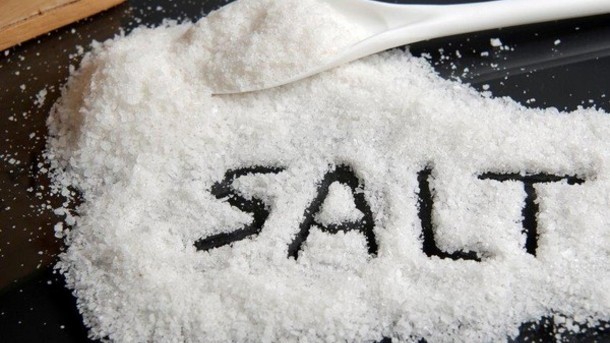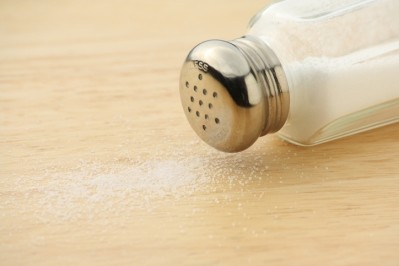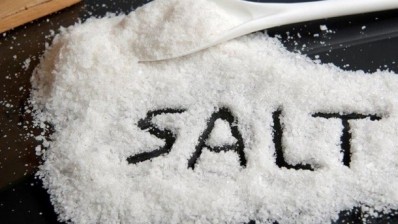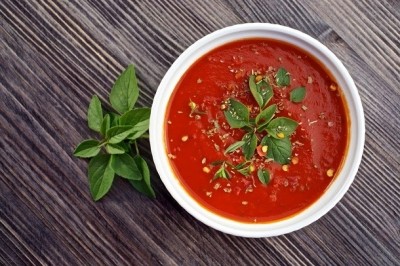Special edition: Sodium reduction
Is sodium reduction falling down the food policy agenda?

Not at the Center for Science in the Public Interest (CSPI), which is frustrated with the lack of progress.
Executive director Dr Michael Jacobson told FoodNavigator-USA: “Yes, the issue has lost momentum, though excess sodium is killing just about as many people this year as four years ago.”
He added: “FDA officials gave up more than half the ballgame when they dismissed the IOM’s 2010 advice to set limits on sodium and instead said they would issue voluntary guidelines [which the FDA told us this month that it is still exploring - but has ‘no update’ to share at this time].
While voluntary limits might be better than nothing, the problem with voluntary approaches is that “companies that want to lower sodium will likely fear that some competitors won't lower sodium”, added Dr Jacobson, noting that “mandatory limits create a level playing field.”
CSPI: Maybe we have to pin some of our hopes on Walmart
Meanwhile, a 2013 report from the IOM merely served to muddy the waters by prompting a confusing academic argument about data on intakes between 1,500mg/day and 2,300mg/day (click HERE) when the wider message - that excessive sodium consumption is bad for your heart, and all Americans need to eat a lot less - was lost, he argued.
“A 50% reduction in sodium consumption is predicted to save about 100,000 lives per year.”
The CSPI would like the FDA to mandate sodium limits, “mount education campaigns” and “implement the school-nutrition standards so kids get accustomed to lower-sodium foods”, he said.
It would also like the FDA to “require warning labels on high-sodium foods, both packaged and sold at restaurants, where some meals contain upwards of 5,000mg of sodium.”
He added: “The FDA - and more so the White House - fear that industry will kill any useful federal action on sodium. So maybe we have to pin some of our hopes on Walmart, which doesn't need to deal with the Office of Management and Budget or Congress, has asked its suppliers to lower sodium levels by 25%. It will be interesting to see how effective that request is.”
Datamonitor: Percentage of new foods making low/no sodium claims has not changed much in past five years
So what do the market researchers say? Is sodium reduction still a hot topic?
When it comes to reformulation efforts, it’s hard to tell how much is going on just from looking at label claims, as sodium reduction is frequently conducted by stealth, observed Tom Vierhile, innovation insights director at Datamonitor Consumer (in other words, firms might be reducing sodium, but they are not flagging it up on front of pack).
There just isn’t a huge push from consumers to buy these products
But the fact that they are not shouting about it from the rooftops does tell us something about where consumers are at, he told FoodNavigator-USA.
“I looked [in Datamonitor Consumer’s Product Launch Analytics database] at the percentage of food product launches (not beverages) in the U.S. making low salt, low sodium, no salt or no sodium claims, and the number has not really moved definitively in either direction in the past five years.”
- 2014 (year to date to Oct 31, 2014) = 3.4%
- 2013 = 4.3%
- 2012 = 3.9%
- 2011 = 3.7%
- 2010 = 4.5%
A category-by-category analysis also shows a mixed picture with almost one in five new launches in dry cooking sauces making such claims from Jan 1, 2013 to Oct 31, 2014 compared with just 1.5% of pizza launches.
Now this could mean that pizza manufacturers are burying the heads in the sand when it comes to sodium reduction (worrying news since pizza accounts for a significant percentage of Americans’ sodium intakes). But it could also simply be a reflection of the fact that pizza fans are more likely to be put off by overt low sodium claims, prompting more manufacturers to reduce sodium by stealth.
- Dry cooking sauces = 18.2% of products making a salt/sodium reduction claim
- Nuts and seeds = 13.8%
- Breakfast cereals = 12.7%
- Dried soup = 10.5%
- Frozen vegetables = 9.4%
- Processed snacks = 8.9%
- Dried pasta and noodles = 7.9%
- Canned soup = 7.5%
- Rice = 7.4%
- Canned vegetables = 7.3%
- Bread and rolls = 3.7%
- Chilled meat products = 2.4%
- Pizza = 1.5%
- Frozen ready meals = 1.2%
Barring some major surprise on the ingredient front, I see slow progress ahead
Consumer research, meanwhile, suggests that consumers just aren’t as bothered about sodium reduction as they are about other food-related issues, said Vierhile, citing a 2013 Datamonitor Consumer survey in which the percentage of consumers ranking low/no sodium or salt as a ‘high priority’ was just 19%.

To put this in context, the percentage of consumers ranking other food claims as a high priority was generally higher (high protein: 25%; low calories: 25%; low/no sugar: 24%; low/no fat: 24%; high vitamins/minerals: 23%; high fiber: 22%).
Waning interest in sodium reduction may also reflect fatigue with ‘health minus’ claims, with consumer more interested in what is in the product rather than what isn’t, he said.
Manufacturers, meanwhile, are also acutely aware not only that reducing sodium may make their products less tasty, but that simply mentioning sodium on food labels can adversely impact consumer perceptions, even where no recipe changes have even been made (click HERE), said Vierhile.
“It is telling that just the appearance of a claim like ‘reduced sodium’ may lower the perceived taste of a product. That really illustrates the problem. There just isn’t a huge push from consumers to buy these products, and products that do try to chip away at sodium contents may be punished for doing so in the form of declining sales.”
He added: “Barring some major surprise on the ingredient front, I see slow progress ahead.”



















